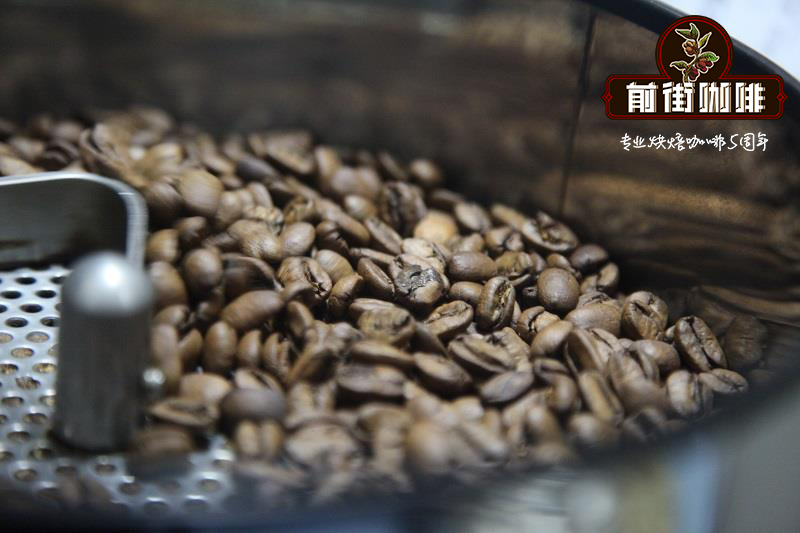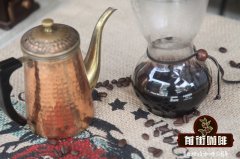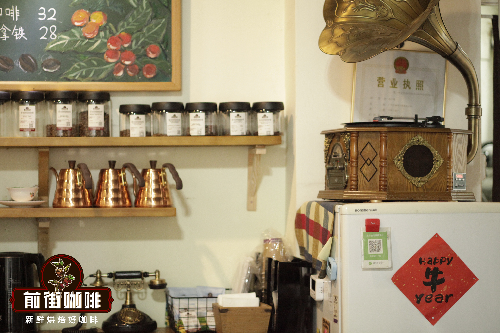Is Ethiopian Coffee Bean Yega Xuefei? mystery of the Origin of Ethiopian Coffee beans

Professional coffee knowledge exchange more coffee bean information please follow the coffee workshop (Wechat official account cafe_style)
The origin of Ethiopian coffee beans:
Ethiopia, the birthplace of coffee: Arabica coffee, grows in the forests of the Kafa region. We believe that Ethiopian coffee has better quality in the world, and the excellent genetic diversity of coffee shrubs is one of the reasons for its quality.
Arabica coffee, which was also found early in the Harald area, must have been brought there from the Kafa region or from an area close to the border with Sudan. Slave labourers at that time picked coffee fruit from the forest, chewed it, and then spit out the seeds, thus spreading it to Harald. This route was also in the path of the Arab slave trade at that time.
In Ethiopia, most coffee is processed by washing; therefore, the taste is bright and bright, with fruit and floral flavors. In addition, some parts are processed by sun drying, which can retain the integrity of the peel and produce a very different pastoral fruit flavor with mellow thickness.
There is a great difference in the taste of coffee produced by sun drying and washing. Water-washed Sidamo, Yirga Cheffe and Limmu coffee are lighter and less earthy than sun-processed coffee of the same kind.
In essence, coffee is a natural agricultural product. When we find a very high-quality coffee (such as sun-processed coffee from the south), it's like tasting Michigan peaches at the peak of the season-sweet, juicy, fruity and ripe.
However, when the batch of coffee is consumed, the flavor of the coffee will disappear. Only when all the natural factors are just right, can we harvest coffee with the same flavor, and such an opportunity is rare.
Different batches of Ethiopian coffee beans may vary greatly. It takes a lot of cup testing to find out which coffee stands out among the same kind of coffee.
When we find the most suitable coffee, we will immediately buy most of the products of the year, leaving only a small gap to prevent other high-quality batches from appearing later in the season.
For tanning Ethiopian coffee, we buy a lot of it from the beginning of the season. Because of this kind of coffee, the earlier the coffee, the better.
● Ethiopian coffee bean brand recommendation
The Ethiopian coffee beans baked in Qianjie Coffee-washed Yegashifi G1 [Kochel] are fully guaranteed in terms of brand and quality. And more importantly, the performance-to-price ratio is extremely high, a pack of half a pound 227 grams, the price is only about 75 yuan. According to the calculation of 15 grams of powder per cup of hand-brewed coffee, 15 cups of coffee can be made in a bag, and each cup of coffee costs only about 5 yuan, which is very cost-effective for coffee shops to sell dozens of yuan a cup.
Qianjie coffee: Guangzhou bakery, the store is small but a variety of beans, you can find a variety of unknown beans, but also provide online store services. Https://shop104210103.taobao.com
Important Notice :
前街咖啡 FrontStreet Coffee has moved to new addredd:
FrontStreet Coffee Address: 315,Donghua East Road,GuangZhou
Tel:020 38364473
- Prev

Ethiopian Coffee Bean grading Standard-explanation of Ethiopian Coffee Bean Export auction process
Professional coffee knowledge exchange more coffee bean information Please follow the coffee workshop (Wechat official account cafe_style) the evaluation criteria of Ethiopian coffee beans were formulated with the assistance of the American Fine Coffee Association (SCAA) (why can't Ethiopia, as the home country of coffee, be independent? Yeah! Think about it)-Egypt fully implemented the central auction system in 2008.
- Next

Description of flavor characteristics of Ethiopian coffee beans Price recommendation of Ethiopian boutique coffee beans
Professional coffee knowledge exchange more coffee bean information please follow the coffee workshop (Wechat official account cafe_style) Ethiopia is the hometown of Arabica coffee, it is in the forests of the Kaffa region that you can see wild Arabica coffee. In Ethiopian, coffee
Related
- Detailed explanation of Jadeite planting Land in Panamanian Jadeite Manor introduction to the grading system of Jadeite competitive bidding, Red bid, Green bid and Rose Summer
- Story of Coffee planting in Brenka region of Costa Rica Stonehenge Manor anaerobic heavy honey treatment of flavor mouth
- What's on the barrel of Blue Mountain Coffee beans?
- Can American coffee also pull flowers? How to use hot American style to pull out a good-looking pattern?
- Can you make a cold extract with coffee beans? What is the right proportion for cold-extracted coffee formula?
- Indonesian PWN Gold Mandrine Coffee Origin Features Flavor How to Chong? Mandolin coffee is American.
- A brief introduction to the flavor characteristics of Brazilian yellow bourbon coffee beans
- What is the effect of different water quality on the flavor of cold-extracted coffee? What kind of water is best for brewing coffee?
- Why do you think of Rose Summer whenever you mention Panamanian coffee?
- Introduction to the characteristics of authentic blue mountain coffee bean producing areas? What is the CIB Coffee Authority in Jamaica?

